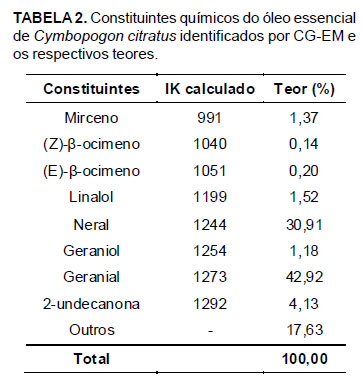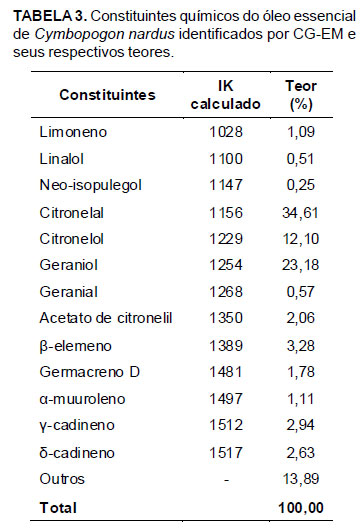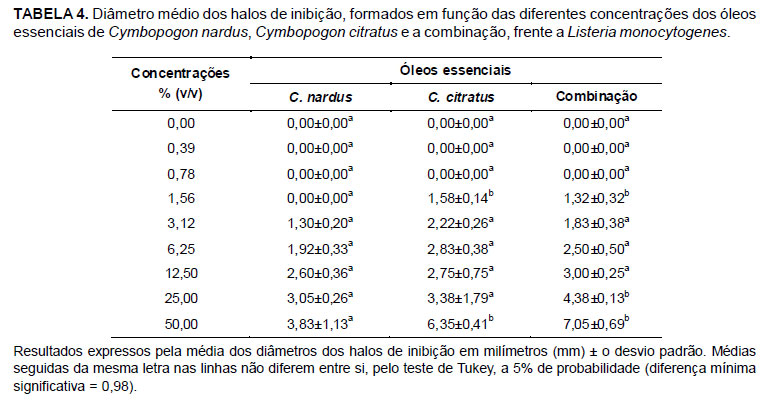The aim of this study was to determine the yield and the chemical composition of essential oils from Cymbopogon citratus (DC.) Stapf. (lemongrass) and Cymbopogon nardus (L.) Rendle (citronella), and to evaluate their antilisterial activity when pure and combined. The essential oils were obtained from fresh leaves through hydrodistillation by using a modified Clevenger-type device. Yield was calculated based on the extracted mass and the plant humidity. The qualitative analysis was done by gas chromatography-mass spectrometry and the levels of the chemical components were detected by gas chromatography with flame ionization detector. The bacteriostatic effect of different concentrations of pure and combined essential oils was determined by the agar diffusion technique. Minimum inhibitory concentrations (MICs) were used to determine the time of bactericidal action. The yield was 1.39% (v w-1 dry basis) for C. citratus essential oil and 2.27% (v w-1) for C. nardus essential oil. Geranial and neral were the major components of C. citratus essential oil, while citronellal, geraniol and citronellol were predominant in C. nardus oil. Most of the used concentrations were efficient against Listeria monocytogenes and bactericidal effects were observed for the MICs. Essential oils of C. citratus and C. nardus, pure and combined, constitute new alternatives of natural antibacterials for the control of L. monocytogenes in the food industry.
Cymbopogon citratus; Cymbopogon nardus; essential oils; antibacterial activity; Listeria monocytogenes





